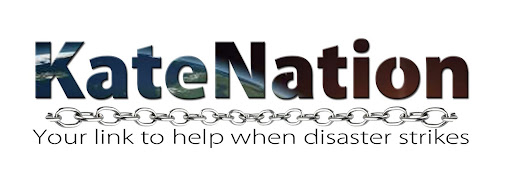I learned a thing or two about the importance of maintaining a family disaster plan during the “Great” Virginia Earthquake of 2011. As I make my living in emergency planning, I like to think that I am prepared. However, there is nothing like an actual event to test the validity of your plan.
This is how the day unfolded; I was at work in Washington, DC on the tenth floor of a twelve story building when the earthquake started. When I felt the first shake, I thought a crane struck my building - there is currently construction next door. Then my tea spilled, the building started to sway, and I quickly realized that the shaking was not construction. At that point, I made my way down the stairs and into a sea of people.
As I walked to the office assembly area, I tried to call my husband, but the lines were congested. I then tried to send him a text…no data. It took me fifteen minutes to get a text message through. He was safe, I was safe, but we had no way to contact our daughter’s daycare. The lines were still overcrowded and at three, she does not know how to text. To make the situation a bit more interesting, we did not have access to our cars to pick her up. Stranded in different cities, my husband and I had to wait for an all clear before we could retrieve our vehicles from underground parking garages.
Thankfully, my husband’s building was soon temporarily reopened so that employees could get their personal items and vehicles. When my building reopened, I made a landline phone call to our daycare and discovered that the kids were fine. The teachers had been instructed to keep the children outside for the remainder of the day as they worked to assess the integrity of the building. About 45 minutes later, my husband picked up our happy daughter who told him about the fun she had running outside without shoes!
Gratefully, at the end of the day, everyone was safe and I learned a lot. Here are some of the lessons I walked away with:
Prearranged Non-Family Daycare Pick-up: In an emergency, if my husband and I are unavailable, I have made arrangements to have a local friend pick-up my daughter. I have her name registered with the front office and I have signed paperwork that will allow her release. If my husband and I are stuck somewhere, we will at least have peace of mind knowing she is safe and in a comfortable home.
Transportation Options Are Important: Driving home is not always an option. I now know the combination of Metro and bus routes I would have to take home. The journey would be long but doable.
An Extra Pair of Shoes at the Office is Invaluable: While Metro and bus are an important option, the reality is it might be faster to walk out of the District. While I keep a disaster supply kit with an extra pair of shoes in my car, I now understand that my car may be off limits. This week, I added a pair of shoes to my shelter-in-place kit at work (yes, the kit does include chocolate).
Prearranged Family Agreements: It took fifteen minutes for me to make contact with my husband. That time span is relatively insignificant but it could have taken much longer. To simplify the on the spot decision making, we now have a default pick-up option for our daughter: if my husband is safe, he will always pick her up. It makes sense for us as I work in the District and crossing the bridge could take hours.
Earthquake Safety: Living in Arlington, earthquakes have not been on my radar. I now know that in an earthquake you should take cover, hold on, and stay in your building until it stops shaking. If you run outside, you have a greater chance of getting hit by falling debris. When the building stops shaking, go outside. Also, if you are outside when an earthquake starts, stay outside and move away from large structures.
 |
| The Great Tea Spill |
Written by Kate Schweigart






